P.PSH.1422 - Northern Genomics commercialisation scoping study
GBVs for eight traits, including two fertility traits, are now commercially available for purebred, composite and crossbred cattle in northern Australia.
| Project start date: | 14 December 2022 |
| Project end date: | 01 May 2025 |
| Publication date: | 29 October 2025 |
| Project status: | Completed |
| Livestock species: | Grain-fed Cattle, Grass-fed Cattle |
| Relevant regions: | Northern Australia |
|
Download Report
|
|
Summary
Cow fertility is a key driver of profitability in northern Australian beef enterprises. While substantial genetic variation exists for this trait, it has been difficult to improve. The Northern Genomics Project (P.PSH.0833) successfully developed genomic breeding values (GBV) and Herd Profiles for purebred, composite and crossbred cattle for fertility, as well as for growth and adaptation traits including tick resistance and buffalo fly lesion score. The GBVs were based on a very large cohort of records from commercial cattle (26k females) representing the vast majority of breeds, crossbreds and composites found in northern Australia. Herd Profiles were demonstrated in that project to be a useful tool for benchmarking herds in Northern Australia for genetic levels for key traits, especially fertility.
Objectives
The objectives of this project were to:
1. Make GBVs for fertility, growth and adaptation traits commercially available at low cost for northern beef producers.
2. Develop a herd profile product initially based on SNP arrays available for northern beef producers, so that genetic level for the above traits can be benchmarked, and areas for improvement identified.
3. Develop a lower cost herd profiling product developed based on DNA pooling.
4. Put out an expression of interest release targeting commercial companies and agencies to train and educate staff on the products and explore commercial partnerships for full commercial delivery. Selection of one company to test the pipeline.
5. Develop five case studies documenting how the technology is being used by commercial producers, to demonstrate value on farm, including capturing how GBVs and herd profiles fit into an overall farming system, where genetics, nutrition, pasture management etc. must all be integrated.
Key findings
- GBVs for eight traits including fertility and Herd Profiles from the Northern Genomics Project have been successfully commercialised, as 'RePRO BI' by Black Box Co.
- The GBVs and Herd Profiles have been bundled with horn/polled tests, parentage and disease diagnostics to improve the value that producers get back from taking a TSU or tail hair sample from their animals.
- It has been demonstrated that 50 animals should be randomly sampled from the youngest cohort of animals in order to get an accurate Herd Profile to benchmark a herd, for fertility, parasite resistance, body condition score and other traits.
- DNA pooling, followed by low fold sequencing, could be used to substantially reduce the cost of the Herd Profile, if the market for this product, independent of individual animal GBV, exists.
- Case studies have demonstrated that selection on GBVs can improve herd fertility, including heifer puberty and P4M.
- Strategies to maintain the accuracy of the GBV have begun to be implemented by Black Box Co.
Benefits to industry
GBVs for eight traits, including two fertility traits, are now commercially available for purebred, composite and crossbred cattle in northern Australia. This will enable selection for these traits, in some herds for the first time. Several herds, with GBVs for cohorts over up to five years, have demonstrated improvement in fertility traits as a result of selection on these GBVs. Herd Profiles are also commercially available, which will enable northern Australian herds to benchmark their genetic levels for the eight traits. This will guide bull selection decisions and lead to further genetic improvement. The GBVs and Herd Profiles have been bundled together with horned/polled tests, parentage, and some genetic disease tests to maximise value from taking a sample from an animal for DNA extraction. Low-cost Herd Profiles are possible using DNA pooling, if there is a market for this product as a standalone from individual GBVs.
MLA action
Further work in this area.
Future research
During the Northern Genomics Project, traits including udder and teat scores were recorded in some herds. GBVs have not yet been developed for these traits. Given the importance of these traits for calf survival (Frisch, 1982), provided genetic variation was sufficiently high, GBVs could enable selection for improved calf survival.
Now that the commercial pipeline for GBVs has been established, GBVs can be calculated for any animal using their genotype and SNP effects for a trait. Projects recording traits like methane and consumer eating quality, could develop GBVs for these traits, provided the reference population used to calculate SNP effects is relevant for northern Australia. This approach should be considered to enable northern Australian cattle producers to select for these traits.
More information
| Project manager: | Sarah Butler |
| Contact email: | reports@mla.com.au |
| Primary researcher: | THE UNIVERSITY OF QUEENSLAND |


